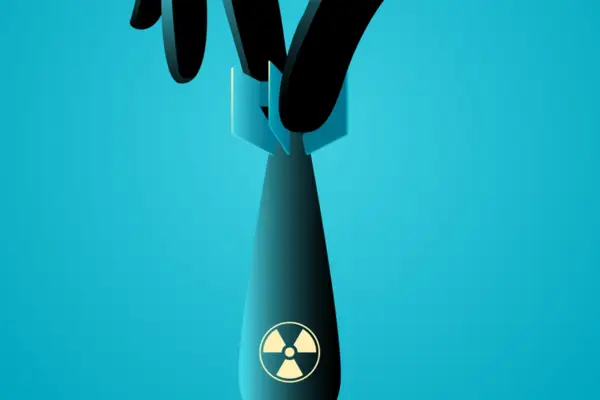The UN Secretary-General recently demanded a halt to nuclear saber-rattling, highlighting the Call for Nuclear No-first-use, during the UNSC meeting in Japan.
Key Highlights on Nuclear disarmament in the Meet:
- The meeting on nuclear disarmament and non-proliferation was convened by Japan, Security Council president for March.
- UN Secretary General called for disarmament and urged States with nuclear arsenals to lead the way across six areas for action that include dialogue and accountability.
- Nuclear weapons are the most destructive weapons ever invented, capable of eliminating all life on Earth.
- In the current scenario, these weapons are growing in power, range and stealth, therefore an accidental launch can lead to negative and dangerous consequences.
- It was being held at a time when geopolitical tensions and mistrust have escalated the risk of nuclear warfare to its highest point in decades.
- The Doomsday Clock- the symbol for humanity’s proximity to self-destruction has emerged in the past few years.
- The survivors of Hiroshima and Nagasaki, known as Hibakusha favoured for peace and an end to the existential threat.
- States possessing nuclear weapons are absent from the table of dialogue, while investments in the tools of war have increased more than efforts for peace.
- The States armed with nuclear weapons should re-engage in dialogue to develop transparency and confidence-building measures to prevent any use of a nuclear weapon.
- Nuclear weapon States must reaffirm moratoria on nuclear testing, which includes pledging to avoid actions under the Comprehensive Nuclear Test Ban Treaty (CTBT).
- Disarmament commitments must become action with accountability, under the Treaty on the Non-Proliferation of Nuclear Weapons (NPT).
- The landmark accord, signed more than 50 years ago, is the only binding commitment to the goal of disarmament by States that officially stockpile nuclear weapons.
- It also highlighted the need for a joint first-use agreement under any circumstances.
- There is need for reductions in the number of nuclear weapons, especially the United States and Russia- the world’s largest nuclear weapons holders.
- The two countries should take the lead and find a way for negotiations towards the full implementation of the New START Treaty and agree on its successor.
- The responsibility of non-nuclear-weapon States shall fulfil their own non-proliferation obligations and to support disarmament efforts.
Key Global Nuclear Weapon Treaties:
Comprehensive Nuclear Test Ban Treaty (CTBT):
- It is a multilateral treaty that prohibits nuclear explosions for military and civilian purposes.
- The CTBT was negotiated at the Conference on Disarmament in Geneva in 1994 under a preamble, 17 articles, two annexes, and a Protocol.
- CTBT was adopted by the United Nations General Assembly on September 10, 1996, and is ratified by about 178 countries.
- India, Pakistan, and North Korea have not signed the CTBT, while China, Egypt, Iran, Israel, and the United States have not yet ratified the pact.
Non-Proliferation of Nuclear Weapons (NPT):
- This international agreement aims to prevent the spread of nuclear weapons and technology, promote peaceful nuclear energy use, and achieve nuclear disarmament.
- The NPT was opened for signature in 1968 and was extended indefinitely in 1995.
- The NPT is the only binding commitment in a multilateral treaty to nuclear-weapon states to achieve disarmament.
- India has not signed the treaty.
- The NPT has three pillars:
- Non-proliferation– States that do not have nuclear weapons agree not to acquire them
- Disarmament– Nuclear-Weapons States (China, France, Russian Federation, United Kingdom, and United States) agreed to pursue good-faith negotiations.
- Peaceful uses of nuclear energy– to promote cooperation in the peaceful uses of nuclear energy
New START Treaty:
- It is an agreement for nuclear arms reduction between the US and Russia.
- START stands for Strategic Arms Reduction Treaty, which restricts the United States and Russia to 1,550 deployed strategic nuclear warheads each.
Ref:Source
| UPSC IAS Preparation Resources | |
| Current Affairs Analysis | Topperspedia |
| GS Shots | Simply Explained |
| Daily Flash Cards | Daily Quiz |



